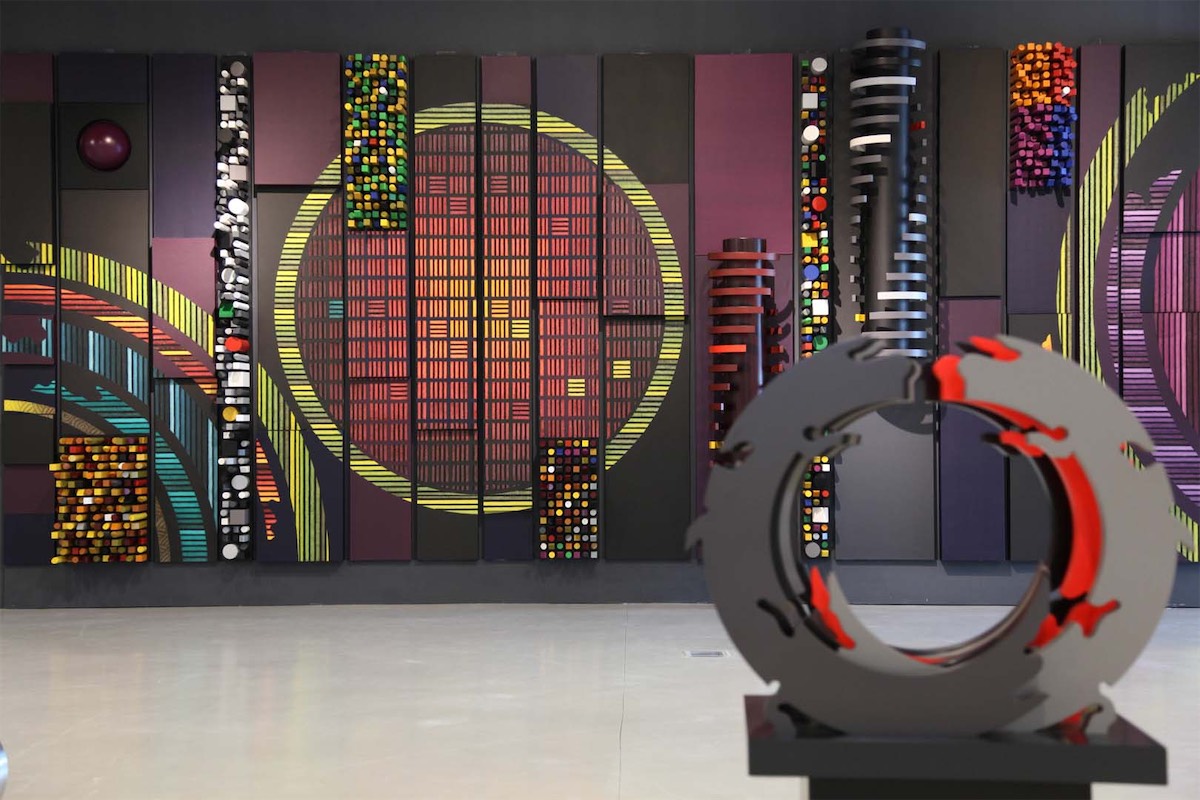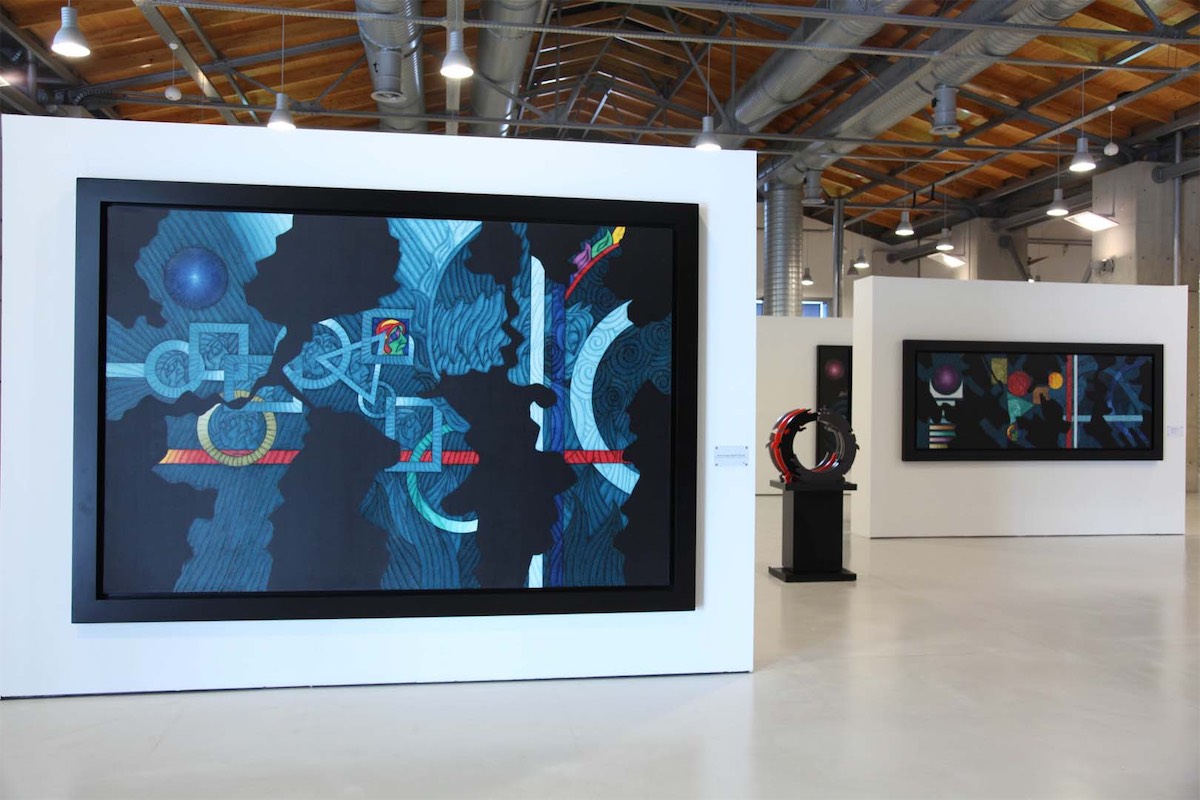22 January – 14 April 2013
Encounter
Cer Modern, Ankara
Encounter, Cer Modern, Ankara, 2013
Güneştekin organizes his main constituents to create new links; he develops plastic forms where colours overflow into the environment, play with light and communicate with the audience. Thus, each colour turns into forms and dissociate from the canvas and turn into pillars, quite different from each other. The exhibition brings together monumental works of the artist, such as Pure Justice, that rely on Heraclitus’s idea of pure justice. The nature of a thing is a bridge between its uniqueness alongside an infinite number of other unique individuals and the whole in which all individuals are united and reconciled. The artist has no hesitation in suggesting that the uniqueness consists of the multitude. Thus, the subject matter of these colossal works, including the one that gives the exhibition its title, is cultural diversity as an element that allows justice to materialize, as it is in the doors of monotheistic religions.
The theme of his monumental works, including Encounter, is cultural diversity as an element that ensures justice. This work gives the exhibition its title recounts what happened after the chemical bomb in Halabja in 1988. It is the conscious pursuit of a political attitude that has always been implicit in favour of cultural, religious and ethnic pluralism: this is the road to the world of an incomparable culture protected by people, families, legends, songs, rituals and memories.
Many of his paintings feature a technique in which dark patches of irregular shape obscure some of the colours and figures beneath, evoking the decayed frescoes and mosaics covered by peeling layers of plaster in the many churches turned into mosques around Anatolia. The coatings that fell off in time, just like a canvas, became a source of inspiration for his paintings. The tenacious use of historical materials within new contexts and historical pieces integrates with living spaces: this phenomenon is what leaves its mark in everyday life. The layers of the past continue their existence in fragments. These negative pictures of Güneştekin resemble the plastered walls of churches where frescoes or mosaics survived to the present day preserved like pieces of a puzzle.
His technique also reminds the coercive absorption of other cultures into the prevailing identity. In the works, beliefs mix and mingle as they have for centuries in Anatolia. Muslims still pray at the tombs of Christian saints today. The Ezidi peacock angel meets with a snake in the Garden of Eden. Greek and Mesopotamian mythology provide other recurring themes in his works, as does the sun, which worshipped in Anatolia long before monotheism.
In a darkened front room of the exhibition, a video installation called Memory screens the dates of atrocities committed over the past century, one after another, each accompanied by historical recordings of hymns and laments. The circulation and proliferation of the black-out images, superimposed with the titles referring to dates of horrific historical events, contain and echo memories. The voices chanting in patterns juxtaposed into these images belong to the survivors from the tragic historical events. Thus, the focus shifts from visual to aural, and the work deals with the various iconic sounds that generate collective memory. It is not a call for a move away from the visual; Rather, by exploring the repetition of sound and the echo of memory, the viewer can find, in the interstices between sight and sound, additional layers in the production and creation of memory. The artist uses the archival footage as the sound of memory in the video. He unearths his vision that memories contribute crucially to constructing histories, exploring the acoustic nature of memory.
The book accompanying the exhibition features an article by Johannes Odenthal, director of Berlin Akademie der Künste, titled Abstraction and Myth, in which he researches the cultural memory of Anatolia through the artist’s works.









